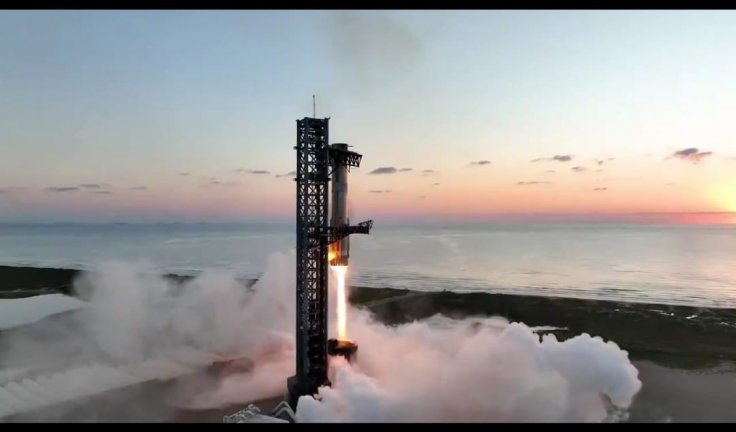SpaceX achieved a remarkable feat on Sunday, catching its massive rocket booster mid-air with mechanical arms. This marks a significant step forward in the company's quest to build a fully reusable rocket for missions to the moon, Mars, and beyond.

The event occurred during the fifth test flight of SpaceX's new Starship rocket, designed for deep space exploration. For the first time, the first stage of the rocket, called "Super Heavy," was successfully caught as it returned to the launch pad in Texas. Giant arms, attached to a towering structure, secured the booster after it had completed its mission. The Super Heavy booster, which is as tall as a 20-story building, made a controlled descent back to the launch site.
The rocket launched from SpaceX's Boca Chica facility. After reaching around 70 kilometers above Earth, the first stage separated from the second stage, known as Starship. Starship continued its ascent into space while the Super Heavy booster turned back toward the launch pad. As it neared the ground, three of its 33 engines reignited to slow its descent, guiding it back to the exact spot from where it launched.
A towering structure, taller than the Statue of Liberty, awaited the rocket's return. Equipped with two giant arms, the structure's job was to "catch" the booster mid-air. The rocket was slowed to a controlled pace and was gently captured by the mechanical arms, gripping onto small bars located under the rocket's steering fins. SpaceX CEO Elon Musk confirmed the success, posting on social media, "The tower has caught the rocket!!" Cheers erupted in SpaceX's control center as engineers celebrated this key milestone.
This catch is a crucial development in SpaceX's goal of making rockets fully reusable, significantly lowering the costs of space missions.
Meanwhile, the second stage of the rocket, Starship, continued its flight at a speed of 17,000 miles per hour, reaching an altitude of 89 miles. The spacecraft was headed toward a planned splashdown location in the Indian Ocean near western Australia. As Starship re-entered Earth's atmosphere, cameras captured the fiery re-entry process, with the spacecraft covered in hot plasma, creating a reddish glow.
This test was an improvement over SpaceX's previous attempt, where damage to the spacecraft's heat-protective tiles caused problems. While Starship safely splashed down in the ocean, it eventually tipped over and exploded into a massive fireball. It remains unclear whether this explosion was intentional or the result of a technical issue.
Despite this final stage mishap, Musk called the test landing "precisely on target." SpaceX engineers celebrated the progress, as each test brings the company closer to creating a fully reusable rocket that can carry astronauts and cargo on future missions.
The U.S. Federal Aviation Administration (FAA) approved SpaceX's license for this test flight just a day earlier, after delays due to disagreements over launch permissions. This achievement marks a significant step forward in the company's ambitious plans for space exploration.








